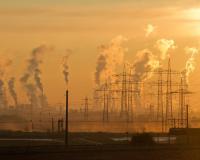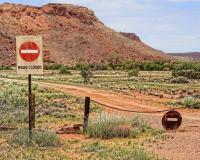
Vibrant Environment
Governance And Rule Of Law
All | Biodiversity | Climate Change and Sustainability | Environmental Justice | Governance and Rule of Law | Land Use and Natural Resources | Oceans and Coasts | Pollution Control

The trade of bats is an issue that has been brought to the forefront during COVID-19, a zoonotic disease outbreak that likely originated in wildlife trade and may even be linked to bats. However, we still lack sufficient understanding of the issues involved with bat trade at both the national and international levels.

Among the dizzying array of commercials and advertisements we see every day, a new electronic product seems to join the lineup every other month. Almost like clockwork, for example, Apple releases its newest edition of the iPhone early in the fall. The company generates worldwide anticipation for the new model, with people frantically pre-ordering and lining up hours in advance to purchase a phone they only plan to use until the following year, when Apple will once again release a newer, sleeker generation of the iPhone.

Numerous studies have shown that Black and Latinx communities in the United States face higher hospitalization and mortality rates from COVID-19 and are disproportionately harmed by the virus. While many cite comorbidities and underlying health issues as the reasons for this disparity, the root of this problem is systemic racism. Recent research has found that social determinants like access to healthcare, employment, and clean air and water are the true inequities that have made COVID-19 deadliest for communities of color.

Electricity generation, one of the leading sources of greenhouse gas emissions, rarely accounts for the social cost of damages caused by carbon dioxide emissions. Embedding these costs into market rates is one way to address the pressing need for decarbonization. In this year’s Environmental Law and Policy Annual Review (ELPAR), a special issue of The Environmental Law Reporter, authors Bethany Davis Noll and Burcin Unel argue that addressing the price of emissions falls within the authority of the Federal Energy Regulatory Commission (FERC). The authors examine how imposing a cost on carbon aligns with FERC’s main goal of ensuring just and reasonable rates, and they explore opportunities and limits for FERC’s authority.

In recent years, scholars, journalists, and activists have drawn attention to the sexist, racist, classist, and homophobic attitudes that surround the U.S. environmental movement. Though the movement’s problematic aspects may come as a surprise to some, the exclusionary nature of mainstream contemporary environmentalism is no accident. The crusade to address the nation’s environmental issues was designed this way from the outset.

Public meetings are a fundamental component of many policymaking and planning processes, including the natural resource damage assessment (NRDA) process that aims to restore the Gulf of Mexico ecosystem and the permitting and environmental review procedures for individual projects.

I have been deposed dozens of times over the course of my career as an expert in forensic history and environmental cost analysis. Due to COVID-19, however, I recently sat for my first remote deposition wherein all parties (myself, defending attorney, deposing attorney, court reporter, and observers) were in different locations across the country and were connected to the deposition using a digital platform.

The coronavirus pandemic is affecting a variety of industries, from travel to retail to restaurants. But perhaps the hardest-hit are meat and poultry processing plants, which have been experiencing outbreaks throughout the United States. In April, President Trump issued an Executive Order declaring these plants “critical infrastructure” to make sure they stay open, and the number of cases in these plants continued to rise in the days and weeks that followed. According to the Midwest Center for Investigative Reporting, as of June 15 there have been over 25,000 reported positive cases tied to meatpacking facilities in at least 235 plants in 33 states, and at least 90 reported worker deaths at 39 plants in 24 states.

On June 4, President Trump signed an Executive Order entitled “Accelerating the Nation’s Economic Recovery from the COVID-19 Emergency by Expediting Infrastructure Investments and Other Activities.” The Order notes that in his March 13 declaration of a national emergency related to the pandemic, the President had invoked “national security” under the National Emergencies Act, 50 U.S.C. 1601 et seq., and “an emergency of nationwide scope” under the Stafford Act, 42 U.S.C. 5191(b).

In his 2019 article, Governing Extinction in the Era of Gene Editing, Prof. Jonas J. Monast of the University of North Carolina School of Law recommends using the Endangered Species Act (ESA) framework to regulate the growing use of gene-editing technology.